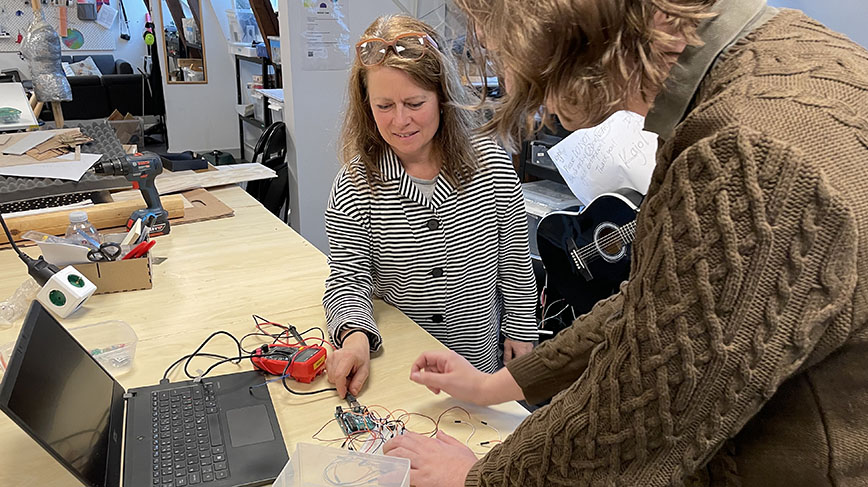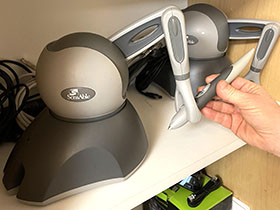“There are no stupid questions”

Eva-Lotta Sallnäs Pysander is Professor of Human-Computer Interaction. As a teacher and researcher, she contributes to the development of multisensory interfaces for collaboration and learning in healthcare and for people with disabilities.
“The students see that what they do will be useful in society.”
The research area brings together computer science and informatics, which can involve developing prototypes that facilitate computer use for people with disabilities. As a teacher in first and second cycle programmes, she prepares students for collaborations with specialists in design and cognitive science.
After graduating from the Behavioural Science Investigation Programme at SU, she was employed at Telia Research. When the MDI graduate school started, the subject was fairly new. She thought it sounded exciting and started her PhD at KTH.

New grant
“I completed my PhD in 2004 and have been here ever since. There have been many research projects over the years. We just received a new grant for a research environment in inclusive digital learning. It is about multisensory interfaces where you get visual, auditory and haptic feedback in three dimensions. So you can see, hear and feel graphic information.”
Sallnäs Pysander is described by others as very committed. She herself emphasises qualities such as stubbornness, perseverance and her love of interdisciplinary work.
“This is where you find the unique issues. The project courses mean that every presentation is unique, it never repeats itself. I get to follow the development of society from the students' point of view. It is everything from computer games to social media and Chat GPT. It is very inspiring to find out what young people consider to be relevant.”
How do you think as an educator?
“In the project work we have clear methods and theories. However, the students can choose the area of application, which makes them very motivated to find out for themselves. For example, they develop haptic interfaces for different application areas and evaluate how these should be designed for specific target groups.”
3–4 sessions
Both of her courses include methodological exercises, lectures, and 3–4 sessions of structured feedback. One project course is more technically orientated and the other is more basic and teaches how to evaluate usability.
“The students have assignments where they write texts and receive feedback in text but also in seminars where we discuss their progress. They learn from their own and other students' successes and mistakes, and from my feedback.”
...and how do you get the students' attention?
“The students see that what they are doing will be useful in society. I emphasise this by showing examples. We also have guest lecturers from companies and we make study visits, including to a large usability evaluation company.”
“In the haptics course we visit CAMST , a centre at Karolinska Institutet where doctors train surgical procedures in simulators with haptics and we test the simulators.”
Work actively
She emphasises the importance of building trust and being available. Students should know that she will do her best to help them perform their best.
“There are no stupid questions, the more questions the easier it is to get a good grade because misunderstandings can be cleared up. I work actively to get the students to discuss more during the course moments. I also encourage them to email me when they have questions.”
Text and photo: Lars Öhman

